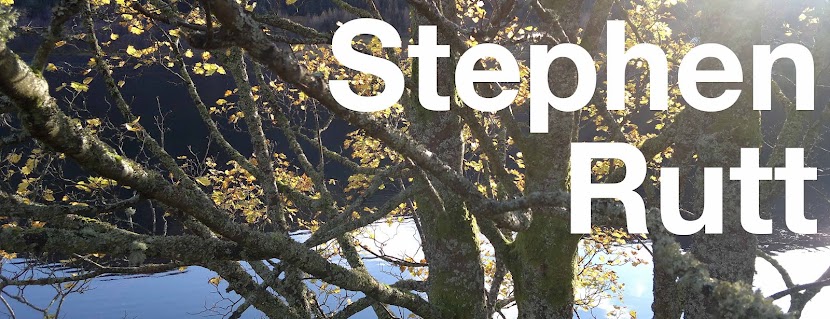It was a brighter morning than the last two, less wintry as
well. The mud underfoot was soft and the puddles not iced over. An ice blue sky
stretched over London, the backdrop to an insipid sunrise and dappled grey
clouds. Still winter then. Breath clouded in front of me and everything seemed
pale and calm. The cold keeps the dog walkers away, but makes the morning
struggle with the dead weight of the duvet one I more often lose than win.
Walking out across the pitches I notice the gulls that roost
here are already mostly gone. Only a few remain to be mobbed by the restless
crows for any worms their pattering feet bring to the surface. I track one idly
in flight. A first winter, it is already agile enough to keep the crows at bay,
but maybe they’re not seriously pursuing it. Dull brown feathers are scattered
across the wings and body like little autumn leaves. I continue to follow it as
it comes back across and morphs from the expected Black-headed Gull into a
Common Gull. I’d misjudged the size; and the everyday turns into something
different. Not exciting – by coincidence the common in the name also suggests something
of its regularity – and not something unexpected either, but something new. I’d
never seen one here before. I look around and find an adult perched on the
grass too. Crisp white and grey, as if it had been made of snow and shadows.
Maybe transformation was the theme of the walk.
Halfway across the park and looking back over my shoulder. A
crow sailed across the sky. As crows have done and will do, it looked dark and
angular and uncannily like a bird of prey. It came in across the park, holding
my attention when it banked, revealing a pale barred underbody. In an instant I
correct myself. Not crow but Peregrine Falcon. It flies into the sunrise but the
light is weak and I can still make out the plumage; the black hood and white
cheeks and the sheer muscular bulk of its body. It circles around and heads off
towards the tall towers of the city.
Transformations. Formerly one of Britain’s rarest birds and
inhabitant of the tallest cliffs in the remotest parts; a recently resurgent
population has taken them into our cities. The towers make perfect cliffs, with
a seemingly endless supply of pigeons. It could be one of London’s, or one from
further afield. Peregrine, from peregrinate, was first defined to me as ‘winter
wandering’: my dictionary only states ‘wandering’, but the winter part stuck.
The idea of winter’s nomadic Peregrine Falcons can’t be moved from my mind.
As it flies off into the sunrise I involuntarily dredge up
all the extraordinary facts about this species. But nothing quite compares to
the experience of actually seeing it. It transforms the morning from pleasant
to something electric. Not so much the spring, but the spark in my step.
A mixed flock of roughly forty Redwings and Fieldfares flew
over the tall trees to the north. I wonder what awaits them in Willesden, maybe
Wembley or perhaps even Watford? I wonder where they go, and where they roost.
I figure I’ll never know and not everything needs extraordinary facts. I stamp
off down the pavement to bring life to my numb cold toes. I walk past the tube
station against the tide of suits. Nobody makes eye contact with the man with
the binoculars, muddy-green coat and cheap wellies.

